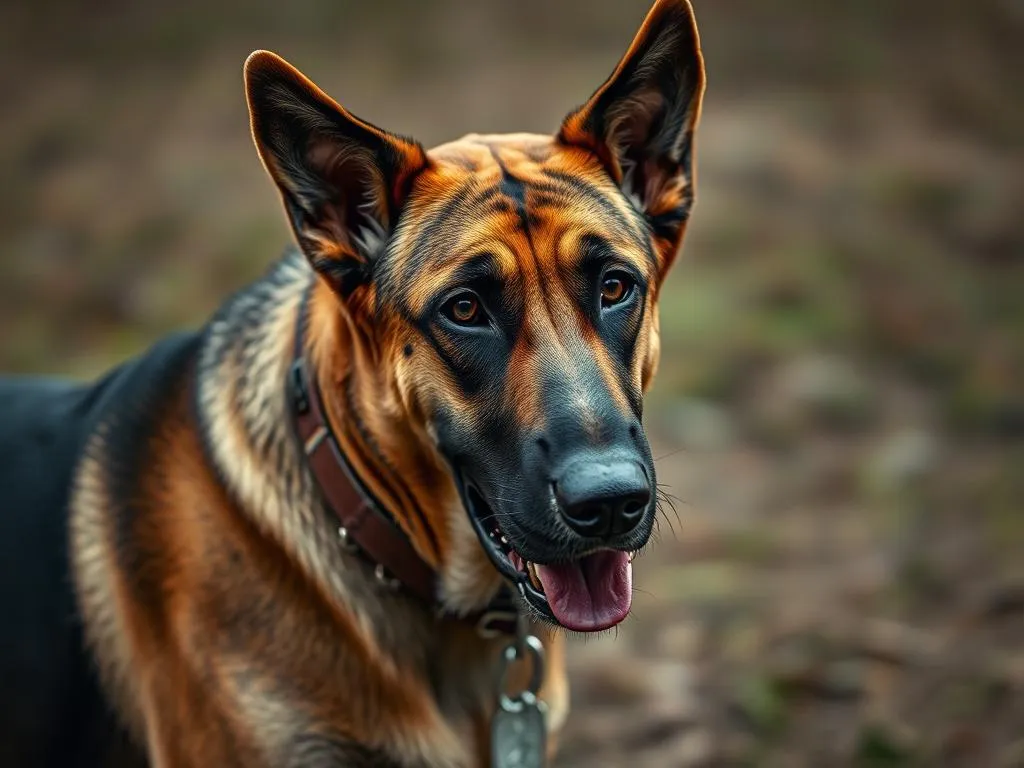
Introduction
The Bloodhound is a breed known for its incredible sense of smell and tracking ability, often used in search and rescue missions. Their distinctive droopy ears and wrinkled skin give them a unique appearance that many find endearing. However, when considering the suitability of a Bloodhound as a guard dog, it is essential to understand the breed’s characteristics, instincts, and training requirements.
Guard dogs play a vital role in ensuring the safety of homes and properties. They are trained to protect their owners and alert them to any potential threats. This article will delve into whether a Bloodhound is a good guard dog, analyzing their traits, behaviors, and necessary training to help prospective owners make informed decisions.
Understanding the Bloodhound Breed
History and Origin
The Bloodhound’s history is rich and fascinating. Originating from Belgium or France, these dogs were bred for their remarkable scent-tracking abilities. Historically, Bloodhounds were used in hunting and tracking down criminals or lost individuals. Their skills have made them invaluable in law enforcement and search and rescue operations, showcasing their adaptability and intelligence.
Physical Characteristics
Bloodhounds are large dogs, typically weighing between 80 to 110 pounds, with males generally larger than females. They have a distinctively heavy build, with a deep chest and long legs that enable them to cover ground quickly. Their coat is short and can come in various colors, including black and tan, liver and tan, or red. One of the most recognizable features of a Bloodhound is their long, droopy ears, which enhance their sense of smell, along with their expressive, soulful eyes.
Temperament and Behavior
Bloodhounds are known for their gentle disposition and friendly nature. They are social dogs that enjoy interacting with people and other pets. Their affectionate demeanor makes them excellent family companions. However, their intelligence can sometimes lead to stubbornness, making training a challenge. Bloodhounds thrive on social interactions and require consistent training to channel their energy positively.
The Role of a Guard Dog
Definition of a Guard Dog
A guard dog is trained to protect its owner and property from intruders. Unlike watchdogs, which primarily alert their owners to the presence of a stranger, guard dogs are prepared to confront potential threats. They are typically more protective and may exhibit aggressive behavior when necessary. This distinction is crucial when evaluating whether a Bloodhound is a good guard dog.
Key Traits of Effective Guard Dogs
Effective guard dogs share several key traits:
- Protective instincts: They demonstrate a natural inclination to protect their territory and family members.
- Loyalty and attachment: A strong bond with their owners enhances their guarding behavior, as they are more likely to defend those they consider family.
- Alertness and responsiveness: Quick reactions to unusual sounds or sights are vital for a guard dog’s effectiveness.
Bloodhounds as Guard Dogs
Protective Instincts
When assessing if a Bloodhound is a good guard dog, it’s important to consider their protective instincts. While Bloodhounds are not typically aggressive, they can be excellent at alerting their owners to potential dangers. Their natural instinct is to track and follow scents, which may not necessarily translate to a proactive guarding behavior. They may bark or growl when they sense an unfamiliar presence, but they are more likely to investigate rather than confront a threat.
Loyalty to Family
Bloodhounds are known for their strong loyalty to their families. They form deep attachments and are often described as “velcro dogs” because they tend to follow their owners everywhere. This loyalty can enhance their guarding capabilities, as they are more likely to protect those they love. However, their affectionate nature also means they might not be as intimidating to intruders as more aggressive breeds.
Alertness and Sensitivity
Bloodhounds possess an exceptional sense of smell that significantly contributes to their alertness. Their keen senses enable them to detect changes in their environment, making them aware of potential threats. However, their sensitivity can also make them prone to distractions, which may impact their effectiveness as guard dogs. While they may not be as naturally aggressive as breeds like German Shepherds or Rottweilers, their alertness can serve as an early warning system.
Training Considerations
Basic Training Needs
Training is essential for any dog, especially for those considered for guarding roles. Bloodhounds require basic obedience training to ensure they respond to commands and behave appropriately. Early socialization is crucial, exposing them to various environments, people, and other pets. This helps them become well-rounded dogs and reduces the likelihood of fearful or aggressive behavior.
Specialized Guard Dog Training
Training a Bloodhound for guarding duties requires specialized techniques, given their independent nature. Positive reinforcement methods work best, rewarding desired behaviors rather than punishing mistakes. Training sessions should be consistent and engaging to keep the dog motivated. Bloodhounds may require specific training to develop protective behaviors, which can be challenging due to their laid-back demeanor.
Behavioral Issues
Common behavioral issues in Bloodhounds include stubbornness and a tendency to wander off, driven by their strong scent-tracking instincts. To address these issues, providing plenty of mental stimulation and physical exercise is essential. Engaging them in scent-based activities can help redirect their energy positively. Consistent training and socialization can also mitigate behavioral problems.
Pros and Cons of Bloodhounds as Guard Dogs
Advantages
- Strong Sense of Smell: Bloodhounds excel in tracking, making them valuable for locating individuals or detecting intruders based on scent.
- Affectionate Nature: Their friendly demeanor makes them great companions for families, offering a balance of protection and companionship.
- Alertness: They can alert owners to unusual activity, serving as a first line of defense.
Disadvantages
- Lack of Aggression: Bloodhounds are not naturally aggressive, which may limit their effectiveness in deterring intruders.
- Independent Nature: Their stubbornness can make training a challenge, requiring patience and consistency from owners.
- Distractions: Their sensitivity to scents may lead them to become easily distracted, impacting their performance as guard dogs.
Alternatives to Bloodhounds for Guarding
Other Breeds to Consider
If you are looking for a more traditional guard dog, several breeds may be more suitable than Bloodhounds. Here are a few alternatives:
- German Shepherds: Known for their intelligence and loyalty, they are often used in police and military roles.
- Rottweilers: Strong and protective, they naturally defend their families and territory.
- Doberman Pinschers: Agile and alert, these dogs are known for their protective instincts.
Each of these breeds has unique attributes that may make them better suited for guarding roles than Bloodhounds.
Mixed Breeds and Unique Options
Mixed breed dogs can also be considered for guarding roles. Many hybrid dogs inherit protective traits from their parent breeds, resulting in unique combinations of characteristics. For example, a German Shepherd-Labrador mix might offer the loyalty and intelligence of both breeds, making for a reliable guard dog.
Conclusion
In summary, evaluating whether a Bloodhound is a good guard dog involves understanding the breed’s characteristics, instincts, and training requirements. While Bloodhounds possess unique strengths, such as their exceptional sense of smell and loyal nature, they may not be the most effective guard dogs due to their lack of aggression and independent tendencies.
For potential owners, it’s crucial to consider lifestyle, environment, and specific guarding needs. Bloodhounds can make wonderful family companions and serve as alert watchdogs, but their suitability as primary guard dogs may be limited.
If you’re considering adding a Bloodhound to your family, ensure you are prepared for their training and socialization needs, while also being aware of their unique traits.









